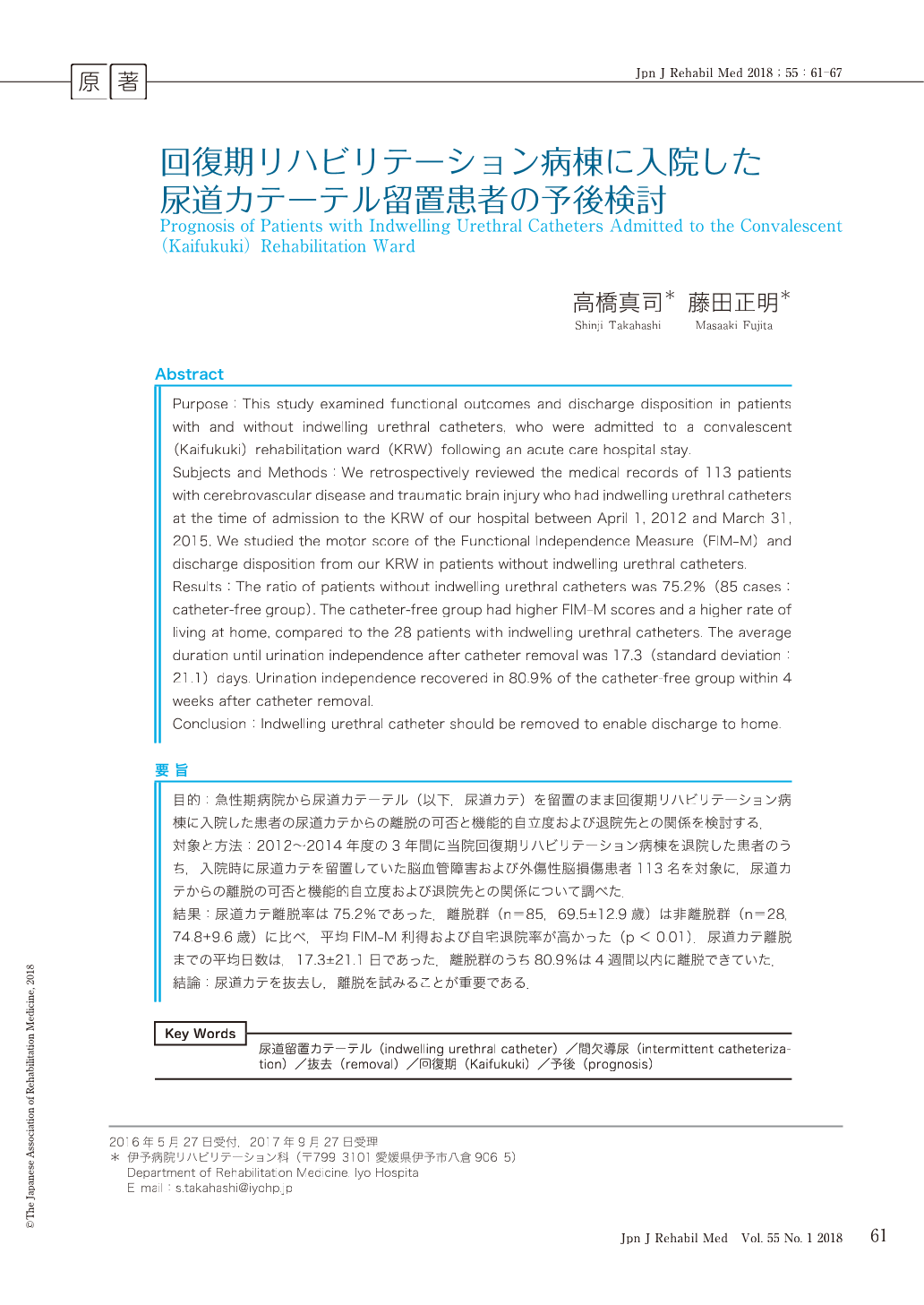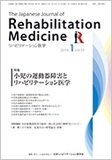Japanese
English
- 販売していません
- Abstract 文献概要
- 1ページ目 Look Inside
- 参考文献 Reference
要旨
目的:急性期病院から尿道カテーテル(以下,尿道カテ)を留置のまま回復期リハビリテーション病棟に入院した患者の尿道カテからの離脱の可否と機能的自立度および退院先との関係を検討する.
対象と方法:2012〜2014年度の3年間に当院回復期リハビリテーション病棟を退院した患者のうち,入院時に尿道カテを留置していた脳血管障害および外傷性脳損傷患者113名を対象に,尿道カテからの離脱の可否と機能的自立度および退院先との関係について調べた.
結果:尿道カテ離脱率は75.2%であった.離脱群(n=85,69.5±12.9歳)は非離脱群(n=28,74.8±9.6歳)に比べ,平均FIM-M利得および自宅退院率が高かった(p<0.01).尿道カテ離脱までの平均日数は,17.3±21.1日であった.離脱群のうち80.9%は4週間以内に離脱できていた.
結論:尿道カテを抜去し,離脱を試みることが重要である.
Purpose:This study examined functional outcomes and discharge disposition in patients with and without indwelling urethral catheters, who were admitted to a convalescent (Kaifukuki) rehabilitation ward (KRW) following an acute care hospital stay.
Subjects and Methods:We retrospectively reviewed the medical records of 113 patients with cerebrovascular disease and traumatic brain injury who had indwelling urethral catheters at the time of admission to the KRW of our hospital between April 1, 2012 and March 31, 2015. We studied the motor score of the Functional Independence Measure (FIM-M) and discharge disposition from our KRW in patients without indwelling urethral catheters.
Results:The ratio of patients without indwelling urethral catheters was 75.2% (85 cases:catheter-free group). The catheter-free group had higher FIM-M scores and a higher rate of living at home, compared to the 28 patients with indwelling urethral catheters. The average duration until urination independence after catheter removal was 17.3 (standard deviation:21.1) days. Urination independence recovered in 80.9% of the catheter-free group within 4 weeks after catheter removal.
Conclusion:Indwelling urethral catheter should be removed to enable discharge to home.

Copyright © 2018, The Japanese Association of Rehabilitation Medicine. All rights reserved.


